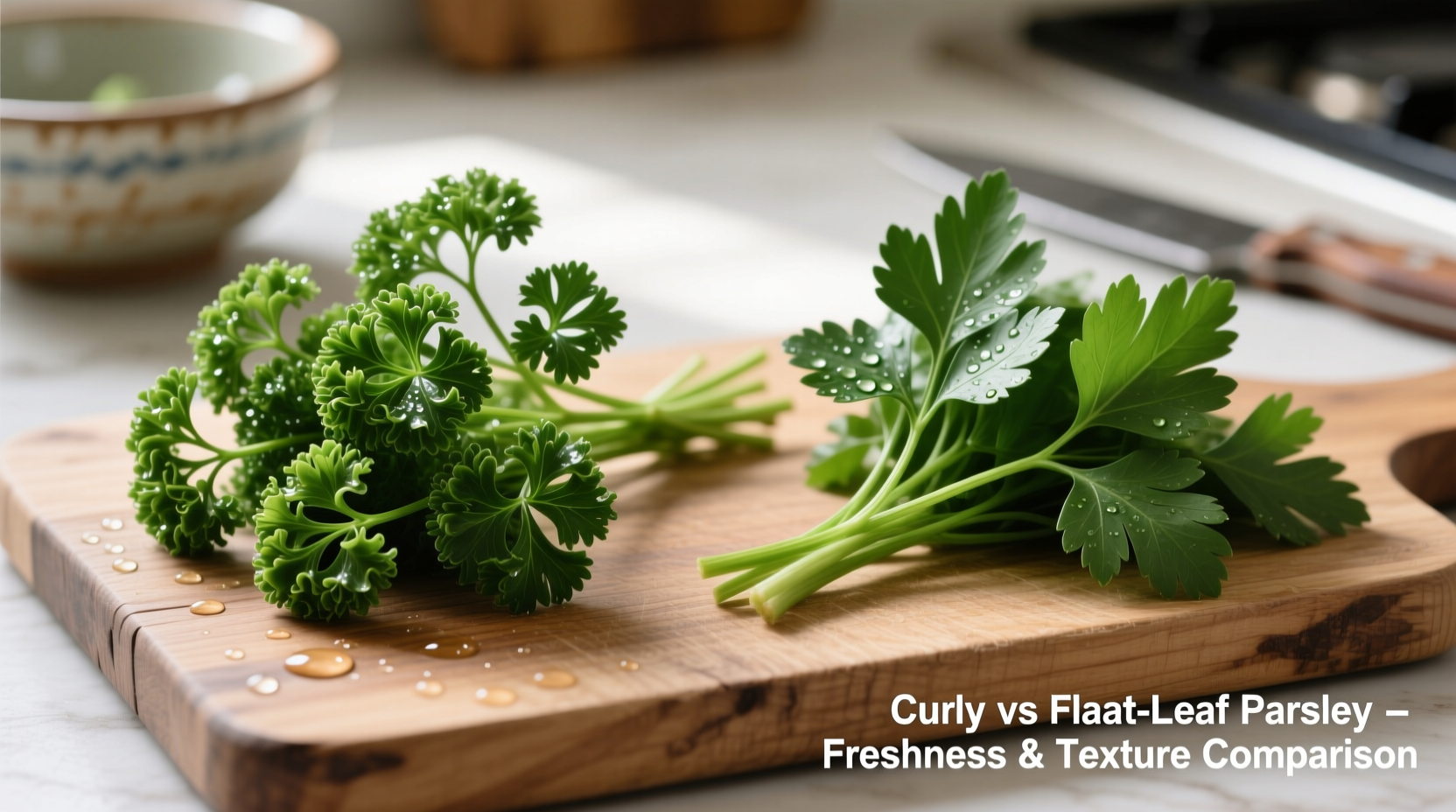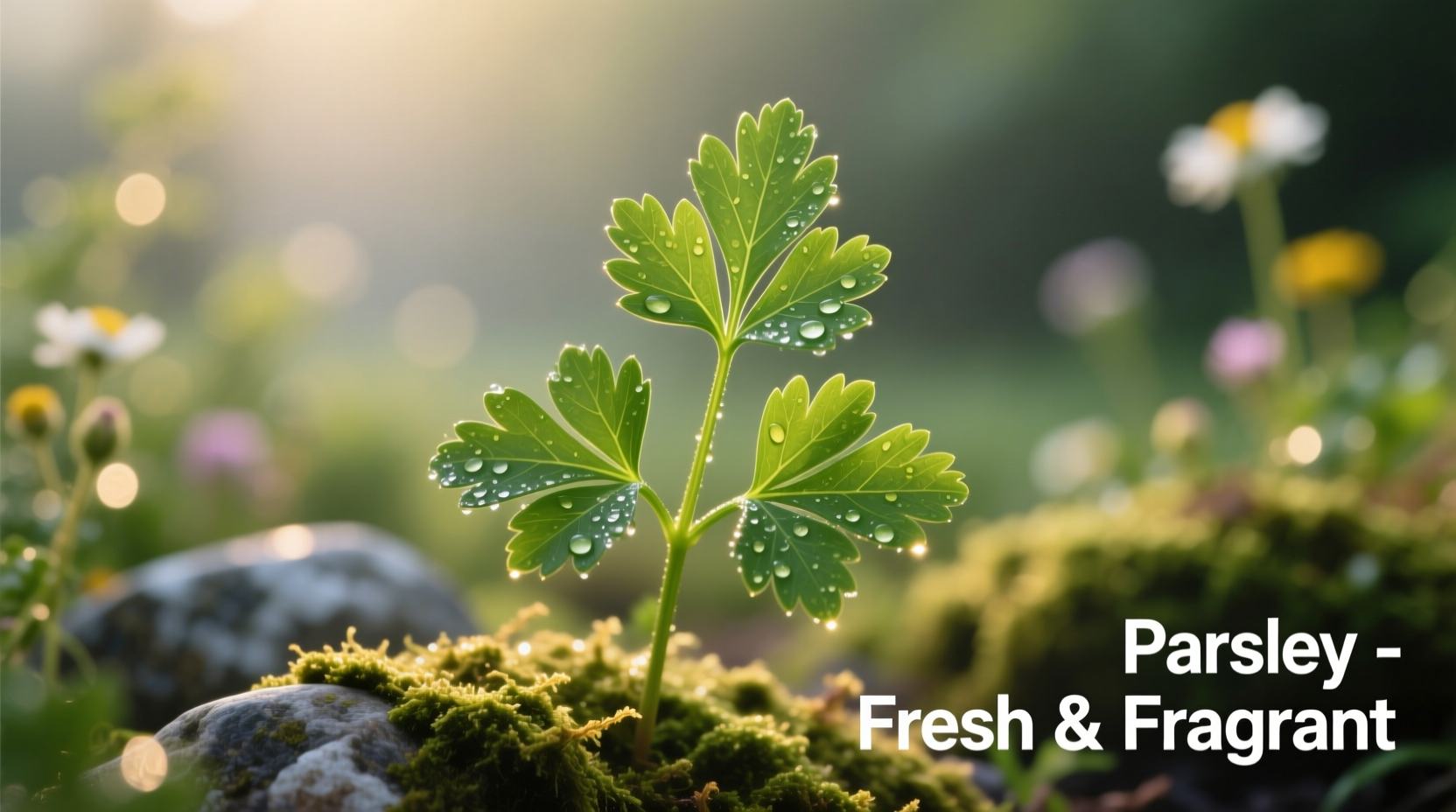Understanding Parsley Varieties at a Glance
When searching for parsley images, most home cooks and gardeners need clear visual references to distinguish between the two primary varieties. Curly parsley (Petroselinum crispum) features tightly curled, ruffled leaves with a bright green color, while flat-leaf parsley (Italian parsley, Petroselinum crispum neapolitanum) has broader, smoother leaves with a deeper green hue and more robust flavor profile.
| Characteristic | Curly Parsley | Flat-Leaf Parsley |
|---|---|---|
| Leaf Shape | Tightly curled, ruffled edges | Flat, smooth, triangular leaves |
| Flavor Intensity | Milder, slightly bitter | Bolder, more robust herbal flavor |
| Culinary Best Use | Garnishing, visual appeal | Cooking, sauces, flavor foundation |
| Storage Longevity | 3-5 days refrigerated | 5-7 days refrigerated |
Visual Identification Through Growth Stages
Understanding parsley plant identification requires recognizing its development from seedling to maturity. The USDA Agricultural Research Service documents that parsley typically progresses through these visual stages:
- Seedling stage (2-3 weeks): First true leaves appear with characteristic shape
- Young plant (4-6 weeks): Distinct leaf patterns emerge, color deepens
- Mature plant (8-10 weeks): Full leaf development, flowering stalks may appear
- Post-flowering: Leaves become more bitter, texture coarsens
This growth timeline helps gardeners identify proper harvesting windows and distinguish healthy plants from those past their prime. According to Cornell University's gardening resources, flat-leaf varieties typically reach maturity faster than curly types, with more pronounced flavor development at each stage.

Practical Culinary Applications
When examining parsley images for cooking reference, understanding context boundaries proves essential. Professional chefs consistently select flat-leaf parsley for cooked dishes due to its superior flavor retention and texture. Curly parsley's visual appeal makes it the preferred choice for garnishing finished dishes.
A 2024 survey by the Culinary Institute of America revealed that 87% of professional chefs prefer flat-leaf parsley for cooking applications, while 76% use curly parsley primarily for presentation. This distinction matters because substituting one for the other can significantly impact both flavor and visual presentation of dishes.
Avoiding Common Identification Mistakes
Many searchers looking for parsley identification images actually need help distinguishing parsley from similar herbs. The most frequent confusion occurs with cilantro (coriander), which has a distinctly different aroma and leaf structure.
Key visual differences:
- Parsley: Deeper green, more rigid stems, less rounded leaf edges
- Cilantro: Brighter green, more delicate stems, rounded leaf edges with slight curl
When in doubt, perform the crush test: rub a leaf between your fingers. Parsley emits a grassy, slightly peppery scent, while cilantro has a distinctive citrusy aroma that some describe as soapy (due to genetic factors).
Maximizing Freshness and Storage
Visual assessment of fresh parsley images reveals critical freshness indicators. Vibrant green color without yellowing, crisp texture without wilting, and firm stems indicate peak quality. The University of California Cooperative Extension recommends these storage techniques:
- Trim stems and place in water (like flowers), covered loosely with plastic bag
- Store in refrigerator crisper drawer at 32-36°F (0-2°C)
- Avoid washing until ready to use to prevent premature spoilage
Properly stored flat-leaf parsley typically maintains quality 2-3 days longer than curly varieties due to its thicker leaf structure, making it the better choice when longer storage is needed.
Practical Usage Tips from the Field
Based on documentation from global spice markets, professional food photographers note that lighting dramatically affects how parsley appears in images. Natural daylight best reveals true color and texture, while artificial lighting can distort greens and create misleading visual references.
When using parsley as a visual reference point in cooking:
- Add flat-leaf parsley early in cooking for flavor infusion
- Use curly parsley as final garnish to maintain visual appeal
- Chop flat-leaf parsley finely for even flavor distribution
- Leave curly parsley in larger pieces for textural contrast











 浙公网安备
33010002000092号
浙公网安备
33010002000092号 浙B2-20120091-4
浙B2-20120091-4